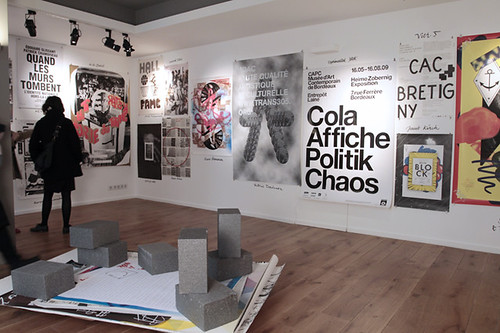
Learn to Read Art: A History of Printed Matter
Philip Feldman Gallery + Project Space at Pacific Northwest College of Art, Portland, Oregon
April 7 – June 17, 2011
Statement: «Printed Matter is pleased to announce the opening of Learn to Read Art: A History of Printed Matter, an off-site exhibition at the Pacific Northwest College of Art in Portland, Oregon. The exhibit presents a survey of the publishing output of Printed Matter, Inc. over the last 35 years. Curated by Max Schumann, Associate Director, and AA Bronson, the show will be open to the public at the Philip Feldman Gallery April 7 – June 17, 2011.
Learn to Read Art brings together hundreds of publications, editions, and ephemera tracing the history of Printed Matter as an alternative space established in response to the growing phenomenon of contemporary artists’ book production. In the context of widespread experimentation in the 1960s and 70s—a general challenging of traditional art forms and media—many artists looked to the book both as a formal device rich in possibilities, as well as for its social and political potency.
This exhibition assembles a broad sampling of Printed Matter’s artists’ books and special editions, as well as various ephemera produced over the years in support of its programs—print catalogs, posters, flyers, postcards—to convey how Printed Matter exists as much more than just a bookstore.
The main legacy of Printed Matter is the tens of thousands of artists’ books and publications that have been circulating around the world over the past four decades. Learn to Read Art offers a distillation of a broad and diverse community and body of work, ultimately committed to experimental and accessible artistic practices.
Artists represented in Learn to Read Art include: Kathy Acker, Lisa Anne Auerbach, Tauba Auerbach, Alice Aycock, John Baldessari, Matthew Barney, Barbara Bloom, Paul Chan, Larry Clark, Francesco Clemente, Chuck Close, Anne Collier, Critical Art Ensemble, Destroy All Monsters, Eric Fischl, Guerrilla Girls, Guerrilla Art Action Group [GAAG], Jon Gibson, Liam Gillick, Robert Gober, Mark Gonzales, Felix Gonzales-Torres, Rodney Graham, Brion Gysin, Rachel Harrison, Mona Hatoum, Matthew Higgs, Nancy Holt, Jenny Holzer, Douglas Huebler, Chris Johanson, Martin Kippenberger, Terence Koh, Barbara Kruger, Tuli Kupferberg, Louise Lawler, Christian Marclay, Ari Marcopoulos, Josephine Meckseper, Aleksandra Mir, Jonathan Monk, Vik Muniz, Yoko Ono, Jack Pierson, Richard Prince, Faith Ringgold, Martha Rosler, Ed Ruscha, Fred Sandback, Cindy Sherman, David Shrigely, Josh Smith, Kiki Smith, Temporary Services, Sonic Youth, Nancy Spero, Richard Tuttle, Lawrence Weiner, Christopher Wool and many more.
Previous iterations of the exhibition have been held at PS1 in New York, Museo de Arte Cotemporáneo de Castilla in León, Spain, Badischer Kunstverein in Karlsruhe, Germany and Artspeak in Vancouver.»










